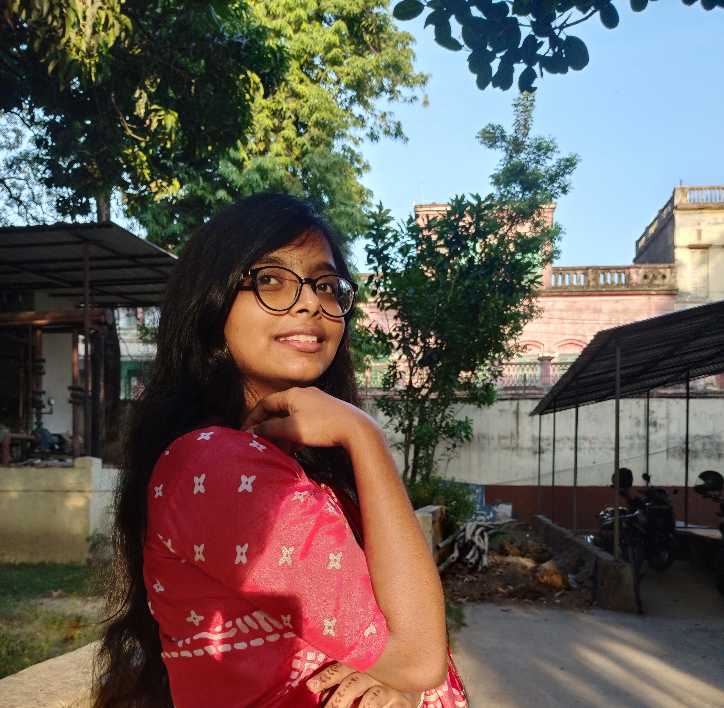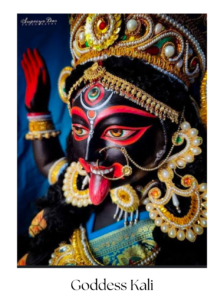
Introduction: When Devotion Finds Its Voice
In Bengal, devotion doesn’t always look like quiet prayers or big ceremonies. Sometimes, it sounds like one person singing to the sky calling out to the goddess with love longing—even frustration, not fear. This is Shyamasangeet, a tradition of songs for Goddess Kali, sometimems also known as Shyama, that has existed for hundreds of years.
These aren’t formal hymns. They’re close talks between the soul and the divine where people treat the goddess not as a far-off deity, but as someone very close— a mother or a daughter. The words are simple, the tunes are haunting, and the feelings are real. Saints and regular folks alike have sung Shyamasangeet, making it the musical core of Bengal’s spiritual life for many generations.
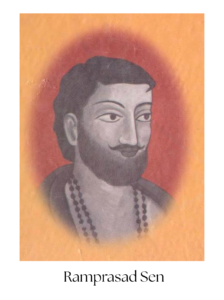
The Sacred Genesis: Origins of Shyamasangeet
Shyamasangeet found its early roots in the 18th century. Ramprasad Sen (1718–1775), a pioneering poet-saint of Bengal, is often considered the father of this genre. His songs expressed an intimate and personal relationship with Kali, portraying her not just as an omnipotent deity but as a beloved mother, or even a daughter. His style combined classical elements with colloquial language, making the songs accessible and deeply moving for ordinary people.
Following Ramprasad, poets like Kamalakanta Bhattacharya and much later, Kazi Nazrul Inslam expanded the tradition. Kamalakanta’s songs were more intense and mystical, often exploring the darker and more paradoxical aspects of Kali, while Nazrul’s compositions brought literary finesse and philosophical depth to the genre.
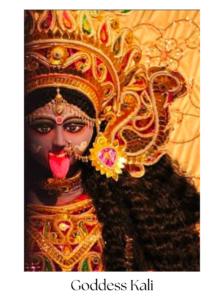
From Temples to Terraces: How Shyamasangeet Flourished
Shyamasangeet didn’t grow within ivory towers—it thrived in the homes of villagers, in temple courtyards, in boats drifting along the Ganges. One of its biggest strengths was its accessibility. You didn’t need to be a scholar to understand it. You just needed faith—and perhaps a bit of heartbreak or longing.
It influenced the Swadeshi Movement of Bengal with all its intensity. For the revolutionaries, Kali was not only a mother figure who was symbolical to the mother India, but also a goddess who taught them to despise life and death.
In the 18th and 19th centuries, as Kolkata rose as a cultural hub, Shyamasangeet began to be performed during Kali Puja celebrations, in Jatra productions, and later, on radio and gramophone records. The songs became a part of public life.
The melodies adapted themselves to the times. Some borrowed from classical ragas, others from folk tunes. The only constant was the emotional intensity. It wasn’t uncommon to hear a boatman humming a Shyamasangeet verse or a grandmother softly singing one while cooking. It wasn’t performance—it was prayer.
A Kaleidoscope of Devotion: Variations of Shyamasangeet
Like any living tradition, Shyamasangeet evolved over time. Many poets composed Shyamasangeet from their aspects, including Rajanikanta Sen, Dashrathi Roy, Kazi Nazrul Islam and Shah Birid Khan. But two of its most pioneering styles can be seen through the voices of Ramprasad Sen and Kamalakanta Bhattacharya.
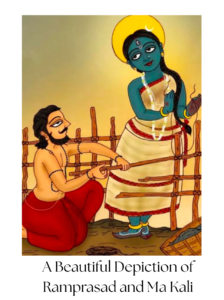
4.1 The Ramprasadi Simplicity
Ramprasad Sen’s songs, popularly known as ‘Ramprasadi’, are perhaps the most well-known in the genre. It is said that Ramprasad brought the ferocious goddess Kali to Bengali household. His compositions typically reflect a deeply personal and emotive relationship with Kali. Ramprasad’s language is simple, rustic, and lyrical, often drawing metaphors from daily rural life.
‘Mon re Krishikaj Jano Na’, ‘De Ma Amay Tabildari’, ‘Jenechi Jenechi Tara’ are some of the most popular compositions of Ramprasad. The melody in this tradition draws from light classical ragas and features minimal instruments often putting the spotlight on vocals and feelings rather than complicated musical arrangements.
Ramprasadi tune has a strong impact on later Shyamasangeet composers such as Kamalakanta Bhattacharya and Nazrul. It also influences the work of other well-known Bengali composers like Lalan Fakir, Rabindranath Tagore, Atulprasad Sen, Rajanaikanta Sen, and many others.

4.2 Kamalakanta’s Mystical Depth
Then there’s Kamalakanta, who came a few decades later. With influence of Ramprasadi tune, his songs are deeper, more intense. Where Ramprasad prevalently sang as a child to a mother, Kamalakanta sang as a seeker to the cosmic force. His verses grappled with big philosophical questions on life, death, illusion, reality.
His famous compostions include, ‘Amar Sadh Na Mitilo’, ‘Shyama Ma Ki Amar Kalo Re’, ‘Mojlo Amar Mon Bhromora’ and many others.
Reference in Popular Culture: The Divine In The Spotlight
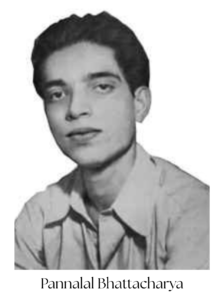
Though rooted in spiritual practice, Shyamasangeet has never been confined to religious spaces. It has a long and rich presence in Bengali popular culture. Singers like Pankaj Kumar Mullick, Dhananjay Bhattacharya, and Pannalal Bhattacharya became the iconic voices of this genre with their Shyamasangeet albums.
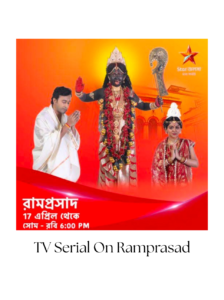
In cinema, Shyamasangeet became an essential part of emotional storytelling. Movies depicting rural Bengal, religious festivals, or inner turmoil often featured a Shyamasangeet track to amplify the mood. Even movies on Ramprasad Sen or Kamalakanta Bhattacharya witnessed a commercial success, bringing their life on the silver screen, obviously featuring their compositions.
Moreover, in popular plays and television serials, especially those depicting mythological or historical themes, Shyamasangeet often serves as a background motif to highlight spiritual tension or divine intervention. Also many popular and commercially successful theatre productions, Jatras and TV serials were based on the life events of the two towering figures of Shyamasangeet, Ramprasad and Kamalakanta with their devotional tunes. Even in literature, authors used references to Kali and Shyamasangeet to explore themes of love, loss, and redemption.
More recently, remixed or modernized versions of classic songs have appeared in Kali Puja albums, YouTube videos, and even fusion concerts—keeping the tradition alive in a new avatar.
Tradition in Transition: Current Status of Shyamasangeet
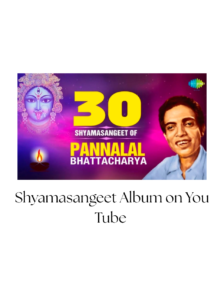
In the 21st century, Shyamasangeet faces both challenges and revivals. On one hand, rapid urbanization, western musical influences, and the commercial nature of modern entertainment have diminished its mainstream presence. On the other hand, there has been a deliberate attempt on the part of music academies, cultural institutions, and individual artists to save the tradition and bring it back in a new way.
Online platforms such as YouTube and Spotify have emerged as new platforms for Shyamasangeet performances, usually reaching international audiences. Classical singers and devotional artists continue to release albums that reinterpret the traditional songs with contemporary aesthetics.
Moreover, during Kali Puja seasons, Shyamasangeet remains an essential part of the ritualistic ambiance in many Bengali homes and temples. Some folk bands of Bengal as well as music reality shows still feature Shyamasangeet prominently.
Yes, young musicians are listening. Some are choosing to stay traditional; others are experimenting—pairing Shyamasangeet lyrics with jazz or electronic music, introducing it to listeners who might never set foot in a temple.
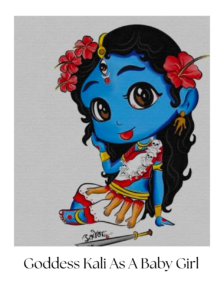
Conclusion: A Living Song of Love and Surrender
Shyamasangeet is not just music. It’s memory, prayer, poetry—and above all, relationship. It reminds us that the divine isn’t always distant or austere. Sometimes, the divine is a mother who forgets to answer, a friend who listens in silence, or a daughter you scold with affection.
In a world that’s rushing forward, this quiet tradition invites us to pause, reflect, and sing—not for applause, but for connection. As long as there are hearts that break, voices that tremble with love, and souls that seek something greater, Shyamasangeet will continue to echo—softly, soulfully, forever.
REFERENCES:
JOURNAL ARTICLE
1. Bagchi, Jasodhara. “Representing Nationalism: Ideology of Motherhood in Colonial Bengal.” Economic and Political Weekly 25, no. 42/43 (1990): WS65–71. http://www.jstor.org/stable/4396894.
2. Saha Roy, Sudeshna, “The Rise of Shyama Sangeet in Bengal: Domestification of the Ferocious Kali Through Songs.” South Asian Research Journal of Arts, Language and Literature 3, no. 5 (2021): 61-67. DOI: 10.36346/sarjall.2021.v03i05.001
NEWSPAPER ARTICLE
1. Bandyopadhyay, Sudip, “Ramprasad Sen: Darpane Samayshashi.” Anandabazar Patrika, April 2, 2022. https://www.anandabazar.com/patrika/special-write-up-on-ramprasad-sen/cid/1336704
2. Chowdhury, Utsab, “Musalman Kobira Likhlen Shyamasangeet, Kalikamangal- Banglar Bhakti O Miloner Itihas.” Prohor.in, November 12, 2023. https://www.prohor.in/before-nazrul-islam-many-musilm-poets-wrote-shyamasangeet
3. Dey, Biswadip, “Shyama Mayer Chorontol- Kalipuja Asampurna Shyamasangeet Chara.” Sangbad Pratidin, October 31, 2024. https://sangbadpratidin.in/editorial/shyama-sangeet-is-an-integral-part-of-kali-puja
4. Murshid, Golam, “Golam Murshider Dharabahik Rochona: Shyamasangeet.” BD News24.com, June 9, 2025. https://bangla.bdnews24.com/arts/27859
5. Saha, Koustav, “Prachin Hok Ba Adhunik Chanda, Shyamasangeet Onekta Jeno Somajer Ayna.” Daily News Reel, October 23, 2022. https://dailynewsreel.in/why-shyama-sangeet-is-the-mirror-of-society/
6. “Chai Na Mago Raja Hote: Shyamasangeeter Bhaktirose Jagrato Hoto Chetona, Darshan.” November 3, 2021. https://www.bongodorshon.com/home/story_detail/consciousness-and-philosophy-were-awakened-through-the-devotion-of-shyama-sangeet
WEB PAGE
1. Banglapedia. “Shyamasangeet.” Last modified May 4, 2014. https://bn.banglapedia.org/index.php?title=%E0%A6%B6%E0%A7%8D%E0%A6%AF%E0%A6%BE%E0%A6%AE%E0%A6%BE%E0%A6%B8%E0%A6%99%E0%A7%8D%E0%A6%97%E0%A7%80%E0%A6%A4
2. Bharatonline.com. “Shyama Sangeet.” Last accessed June 9, 2025. https://www.bharatonline.com/west-bengal/music/shyama-sangeet.html

